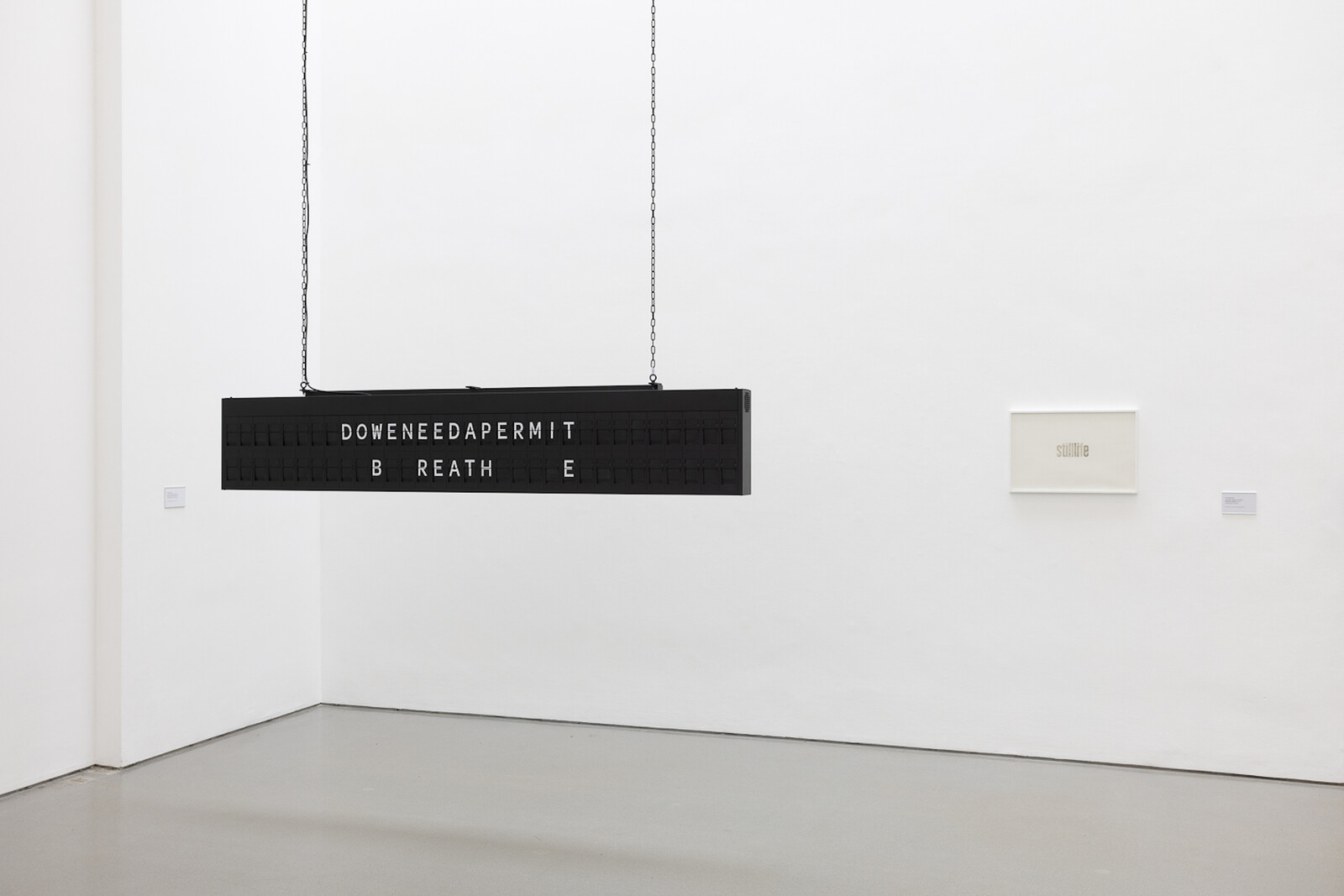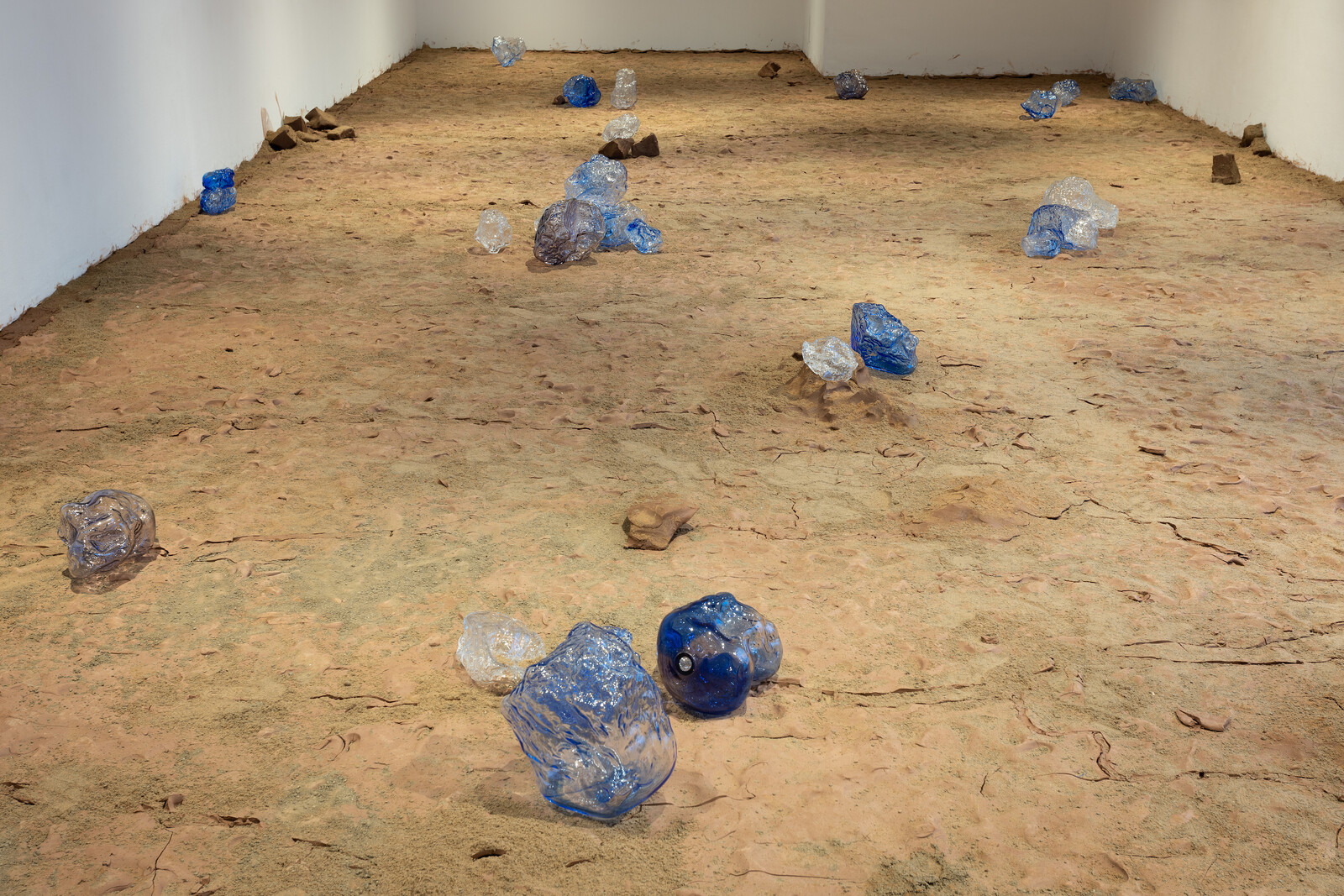Categories
Subjects
Authors
Artists
Venues
Locations
Calendar
Filter
Done
September 25, 2023 – Review
“The Weight of Words”
Caleb Klaces

Here are some of the phrases the visitor will encounter at “The Weight of Words,” a group show featuring eighteen living artists and writers working across sculpture and poetry: “WHAT IF NOT EVERY WORD IN YOUR SENTENCE;” “Traducing Ruddle;” “as you wlak [sic] the distance changes; ” “stilllife;” “EFEND DIGNITY COPY AND ORIGINAL.” Out of context, these formulations sound more like material gathered by a lexicographer or anthropologist than lines composed by a poet. Yet the works that feature them are poetic in the best of senses: distilled and suggestive, affecting in ways I can’t quite explain and yet will remember.
The curators, Clare O’Dowd and Nick Thurston, argue that the works on display represent the meeting of two traditions that have been artificially separated and codified. Sculpture and poetry are taught and interpreted as distinct disciplines, when they are in fact intimately connected by purpose and technique. Several of the artists here point to literature in their work: Joo Yeon Park’s kit-like engraved aluminum is a fragment of potentially infinite architecture such as that imagined in Jorge Luis Borges’s “The Library of Babel” (1941); a commissioned text by poet Anthony (Vahni) Capildeo, swimming amongst fish in a blue vinyl …
July 22, 2022 – Review
Lungiswa Gqunta’s “Sleep in Witness”
Novuyo Moyo

Though not officially a part of the exhibition, the enormous black-and-white photograph on the exterior of the Henry Moore Institute—the image also appears on promotional material—anticipates the works shown inside. It depicts four Black women posing and gesturing playfully by some rocks on a beach. The women are a part of Lungiswa Gqunta’s family, and the photo was taken in mid-1970s South Africa at the height of Apartheid, when the best parts of the country’s vast coastline were delegated for the use of white people only. With this additional information, the photograph captures a moment of resistance, pointing to one of the many ways in which Black people reclaimed their rights to access, freedom, and movement.
Gqunta was born in 1990, four years before South Africa held its first democratic elections with universal suffrage. This period may have brought an end to the legislative system of Apartheid, but its effects endure—a point to which she constantly returns in her practice. This economical show opens with Zinodaka (2022), an installation that takes up the entire floor of the first room, meaning the visitor has to walk over it to get to the other galleries. In the work, a thin, patchy layer of …